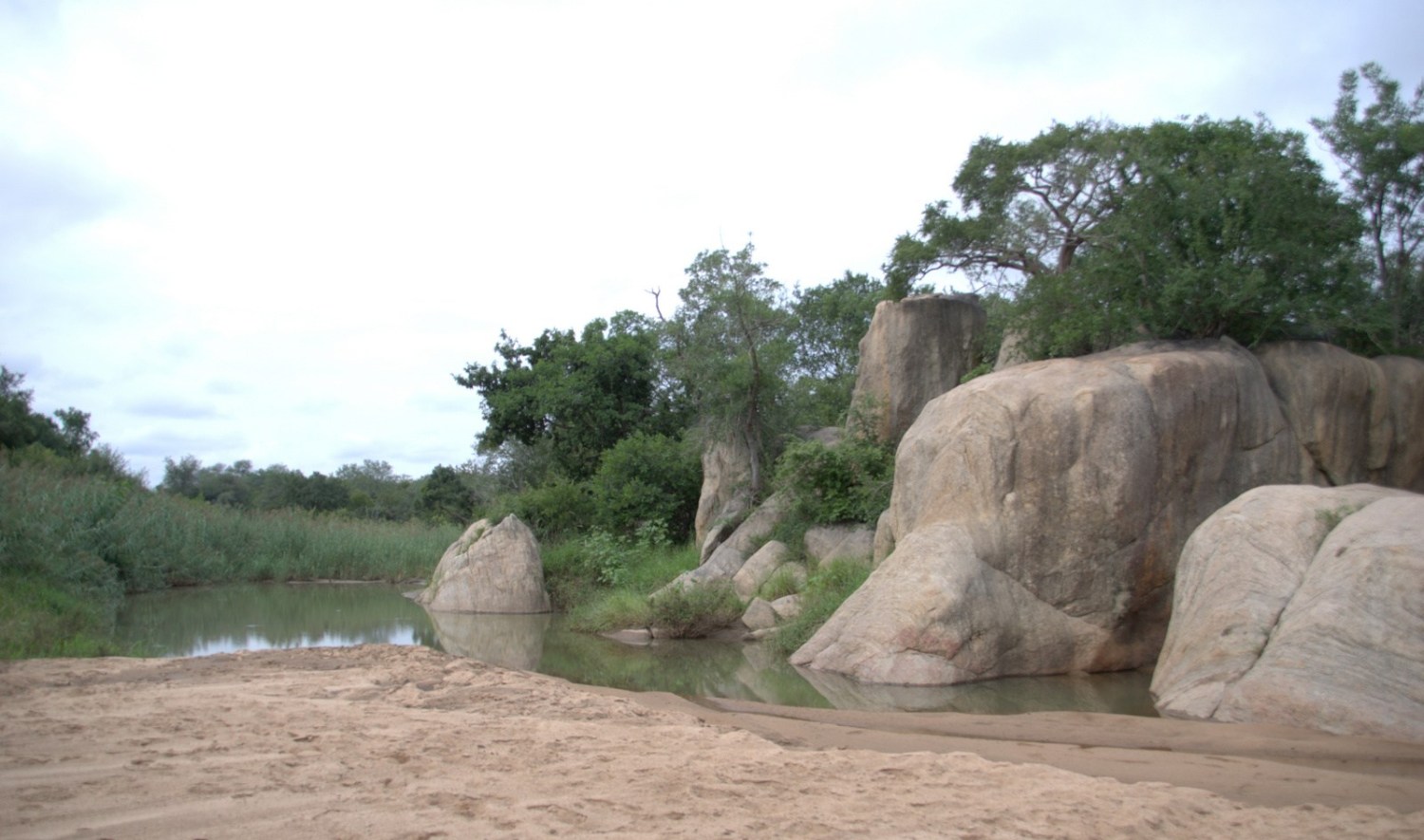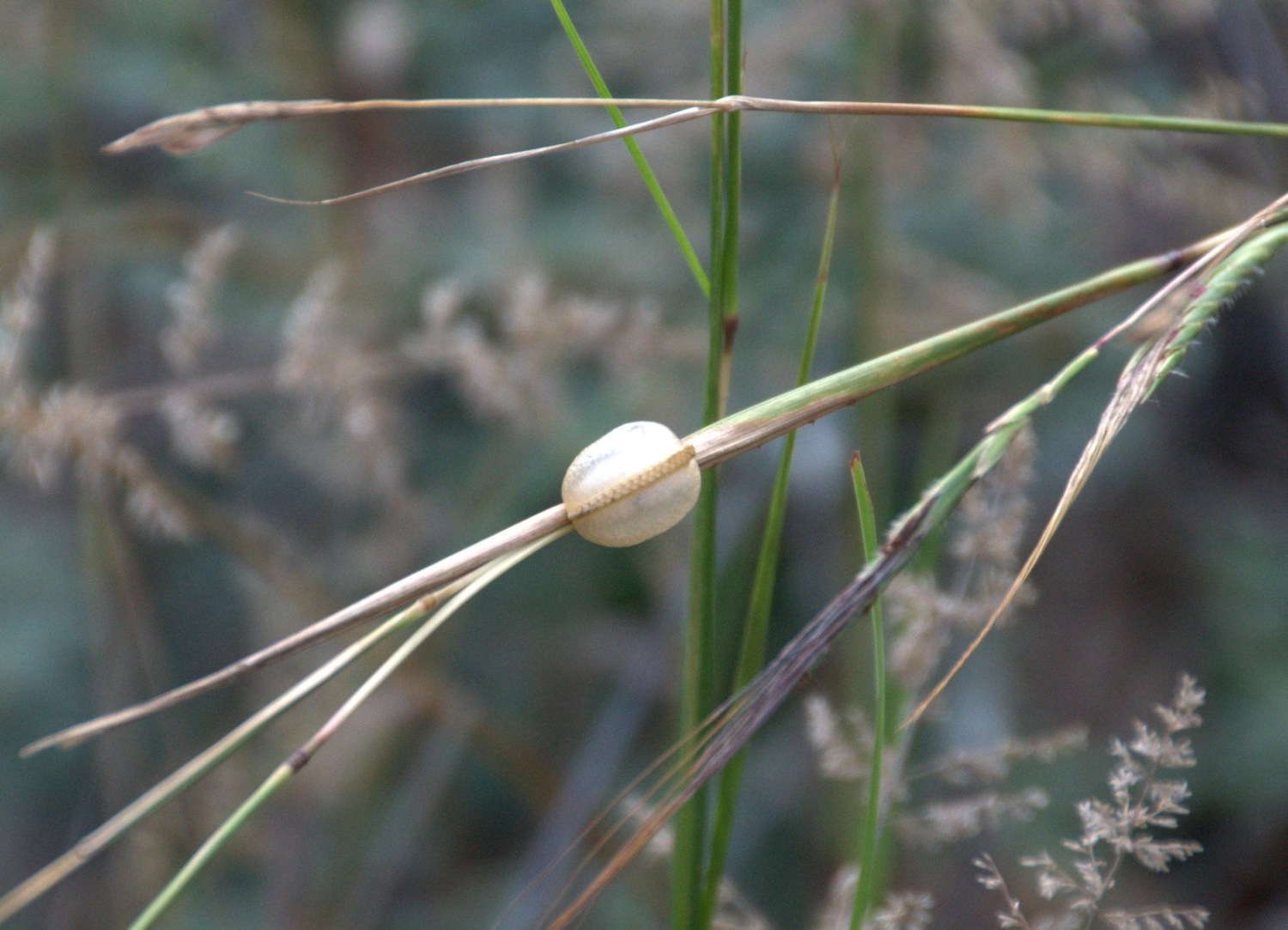Can You See Yourself Doing a Bushwalk?
July 19, 2019 - 2 minutes readEcoTraining’s awesome EcoQuest course isn’t about dashing from one Big Five sighting to the next in a safari vehicle. It’s about getting intimate with the ecosystem and the biodiversity of the area around Karongwe Camp in South Africa.
 And walking in the bush is the best way to achieve that. Like taking a moment to marvel at dew caught on a spider’s web. Looking like diamonds on a tiara, it’s almost impossible not to be in awe of what nature can produce.
And walking in the bush is the best way to achieve that. Like taking a moment to marvel at dew caught on a spider’s web. Looking like diamonds on a tiara, it’s almost impossible not to be in awe of what nature can produce.
 A place for quiet meditation before the walk begins? This group of boulders just outside the camp perimeter is where EcoQuest groups meet before heading off on an afternoon walk.
A place for quiet meditation before the walk begins? This group of boulders just outside the camp perimeter is where EcoQuest groups meet before heading off on an afternoon walk.
Whether experiencing big game on foot or enjoying the more intricate details of the bush, a walking safari or bush walk is an amazing way to get back to basics and enjoy all that nature has to offer. It’s time to use your senses, listen, smell and touch and just be one with the environment around you.
 And what exactly is this? It’s the egg sack (otheca) of a praying mantis. Soft and foamy when forms, the sack eventually becomes hard and dry in order to protect the eggs until they hatch. Hatching can occur between three and ten weeks after the mother spider lays them.
And what exactly is this? It’s the egg sack (otheca) of a praying mantis. Soft and foamy when forms, the sack eventually becomes hard and dry in order to protect the eggs until they hatch. Hatching can occur between three and ten weeks after the mother spider lays them.
 The reserve and area around the camp is alive with many different species of butterfly. This is a male African-veined White. Beauty personified!
The reserve and area around the camp is alive with many different species of butterfly. This is a male African-veined White. Beauty personified!
 The word “weed” often conjures a negative connotation. However, they often boast attractive flowers to attract insects that will help to pollinate and propagate the species.
The word “weed” often conjures a negative connotation. However, they often boast attractive flowers to attract insects that will help to pollinate and propagate the species.
 Even grass weighed down by water droplets becomes a talking point. Each species serves a different purpose within the environment.
Even grass weighed down by water droplets becomes a talking point. Each species serves a different purpose within the environment.
 EcoQuest groups marvel at the stunning sunset from the river bed. Hence the grass along the banks seems to loom large in the photographs.
EcoQuest groups marvel at the stunning sunset from the river bed. Hence the grass along the banks seems to loom large in the photographs.
Tags: African Bush Walks, Big Game Africa, biodiversity in South Africa, Ecosystems in South Africa
0 Comments